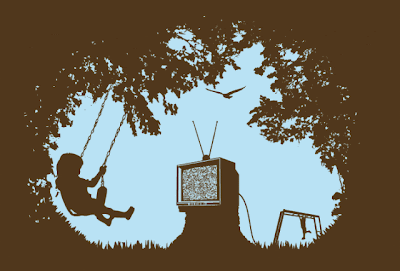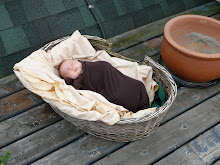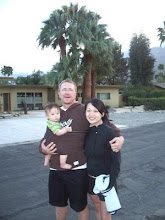
( my Friend DJ made notes from this very interesting book about how children need nature. I totally agree and it makes me want to move the family out to the country )
NOTES From - Last Child in the Woods – Richard Louv VPL 155.418 L89L
- Natural play a quaint artefact
- Kids now aware of environmental issues but have little physical contact with nature
- nature now is more abstract than reality
- Contact with nature may be as crucial to childhood development as good nutrition and adequate sleep
- Early experiences of nature bind us to nature forever
- Unlike tv which steals time, nature amplifies it
- Nature offers healing, fantasy, escape, creativity, senses, privacy
- Nature is a place of archetypal power, teaching, and challenge; offers wonders , calm and focus but also excitement
- Book identifies the current generation as the 3rd frontier (of America), displaying the following characteristics:
o 1. Separation from food source/origin
o 2. Merging of machines, humans
o 3 Increased awareness about environmental information but less intimacy with it
o 4. Increasing numbers of wild animals in cities
o 5. Increase in suburban lifestyle
- Children in this age display a “know it all” attitude
- In one study, a child, asked to list her weekly activities does not list her soccer games or practices as playtime
- Current life is less a life of the senses than previously
- Shift since the 1970s from activity orientation to knowledge orientation
- Cultural autism (tunnelled senses, feelings of isolation and containment)
- Narrowing of true experience
- We’re losing our ability to experience the world directly and this impoverishes us.
- John Dewey in the early 20th century said that the worship of secondary experiences (tv, video, computer as opposed to real life experiences) in childhood came with the risk of depersonalizing human life
- Children live through their senses
- Sensory experiences link kids to their exterior world with their interior hidden world
- The natural enviro is the principal source of sensory stimulation
- Freedom to explore and play outdoors is essential for a healthy inner life
- Self-actuated, autonomous interaction with nature
- Children test themselves by interacting with their enviro and reconstructing human culture
- Depression. Loneliness reported in adults who did not spend free play time outdoors , especially in wilderness
- New technology moves us further from direct experience
- Physical touch is essential for human health – and ultimately for peace in the world (think of hand-shakes)
- Medical students have trouble understanding how the heart works because they’ve never used a pump or a siphon
- “that which can’t be googled doesn’t count”
- The “know-it-all” attitude is really quite fragile; breaks down with real-life experiences with nature
- Deepest friendship evolve from shared experiences, especially in environments where all the senses are enlivened
- Natural settings stimulate all the senses; these help build cognitive constructs in children’s brains
- Nature stimulates the imagination limitlessly
- TV and electronic media displaces the primary experience of nature
- There is more creative play in natural environments vs. build spaces (playgrounds)
- Children use more imagination, retain a greater sense of wonder, are more egalitarian, and have a greater ability to concentrate when they play in natural environments without imposed structure
- The developing consciousness of all children involves a dynamic sense of relationship with their place
- Nature is used as a restorative therapy for children with ADHD
- Too much (adult) directed activity leads to attention-directed fatigue in children, leading to impulsive behaviours, agitation, irritation, and inability to concentrate because the neural inhibitory mechanisms become fatigued by blocking competing stimuli
- In 1990, children roamed over was five times less area than did kids in 1970;
- Stranger danger scare (94% of abductions are actually perpetrated by family members or friends) is now blamed for increased shyness among children and adults as well as the retreat from social interaction into electronics; a high price to pay for the perception of guaranteed safety
- Too much education/exposure to enviro abuse/degradation may make kids feel overwhelmed; they associate nature with catastrophe, not wonder
- More environ-based OR place-based education recommended (currently PCs sucking up education dollars)
- Knowledge of local vegetation and environment decreasing; how can we notice if some organism is changing or in the wrong place if we don’t know what should be there??)
- Concern re waning sense of awe
- US national park usage decreasing; camping down especially among the under 30s
- Development and energy interests are moving in to fill the void (by exploiting natural resources in the national parks)
- Environmentalists are looking increasingly old and white
- In US, Girl Scouts now have more programs to do with stuff other than nature (including marketing, product-developments, interviewing skills)
- In the middle Ages if you said you were bored you were committing a sin of devaluing the world and its creator; would have been considered self-indulgent
- In pre-modern times, life wasn’t considered interesting or exciting either, it just was
Kids need day-to-day contact with he elements (not necessarily dramatic, or picturesque wilderness – it’s better to know one mountain than to climb many
- Modern life narrows the senses; nature accentuates the senses
- The child in nature has to make decisions not encountered in a constricted, planned environment; ones that present danger but also opportunity
- The natural environment is more complex than any sports field
- Nature is where the inner life can develop at its own pace
- Advocate for joy and wonder with respect to nature (over the educational)
- Fear of liability adds another layer of deterrence to encouraging natural play























